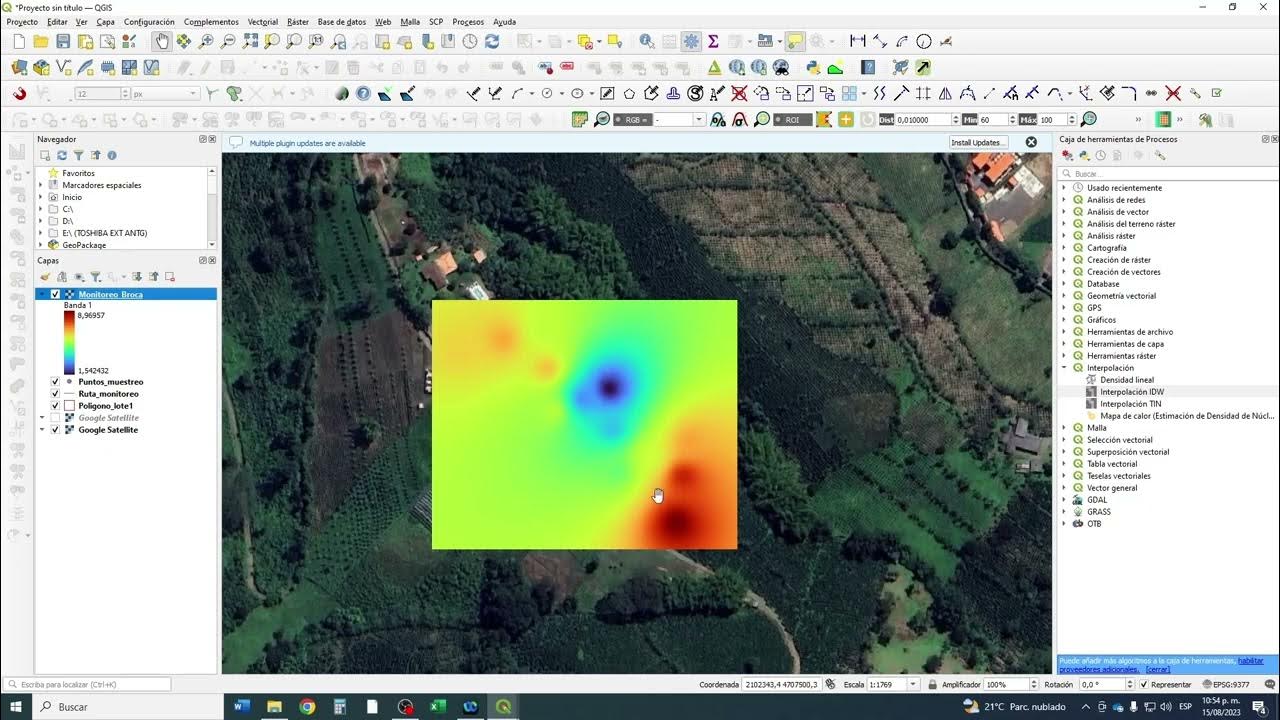Cara membuat peta pita
Summary
TLDRThis video provides a step-by-step guide on how to create a tape map, which involves documenting the objects encountered during a journey. The process includes preparing materials, recording essential information like team name, date, and key details, and then drawing the map from bottom to top. The journey described in the transcript starts from home, passing through various landmarks such as rice fields, coconut trees, bridges, and bean gardens, with clear instructions on measuring distances and directions using a compass. The video concludes with completing the tape map by documenting each stage of the journey.
Takeaways
- 😀 To create a path map (peta pita), you need to document objects encountered during the journey, noting their location on the map as you travel.
- 😀 Essential materials for creating a path map include data for the group's name, date, and description at the bottom of the page.
- 😀 The top of the page contains columns for number, time, distance, direction, and notes, which are important for documenting the journey.
- 😀 The path map is drawn from bottom to top, starting with the first recorded event of the journey.
- 😀 The first step in the journey is leaving home and heading toward a field, with specific distances and directions (180° or South).
- 😀 Along the journey, notable landmarks such as a coconut tree on the right and a house on the left should be recorded on the map.
- 😀 The next recorded event is passing a bridge, followed by a trip through a vegetable garden (with a distance of 130 meters and a direction of 270° or West).
- 😀 Additional landmarks include pine trees on the left and a field on the right of the path during this segment of the journey.
- 😀 Continue documenting the journey with more numbered entries, noting each new event or object encountered along the way.
- 😀 The map is created by visually marking these recorded points, ensuring each step follows the previous one in sequence until the journey is complete.
Q & A
What is the purpose of creating a 'peta pita' (tape map)?
-The purpose of creating a 'peta pita' (tape map) is to document a journey by noting objects and landmarks encountered along the way. It provides a visual representation of the route, distance, and direction, which is useful for navigation and orientation.
What information should be included in the bottom section of the tape map layout?
-The bottom section should include the following information: the name of the scout team ('Regu Gudep'), the date of the journey, and any relevant notes or descriptions ('Keterangan').
What are the columns found in the top section of the tape map layout?
-The top section contains several columns: 'Nomor' (Number), 'Waktu' (Time), 'Laporan Jarak' (Distance Report), 'Arah' (Direction), and 'Keterangan' (Notes). These columns are used to track and document the journey's details.
How do you use a compass in creating the tape map?
-The compass is used to determine the direction of the journey at each point. The direction is recorded in degrees (e.g., 180° for South) to help accurately map the route.
How should you record objects encountered along the journey?
-Objects encountered along the journey should be recorded in the 'Keterangan' (Notes) column, specifying whether they are on the left or right side of the path. For example, you might note 'house on the left' or 'coconut trees on the right'.
What should you do if you encounter a new location or landmark during the journey?
-If you encounter a new location or landmark, document it in a new row with the corresponding time, distance, direction, and description. Each new location should be sequentially numbered in the 'Nomor' column.
What does the 'Laporan Jarak' (Distance Report) column represent?
-'Laporan Jarak' represents the distance traveled from the previous point, measured in meters or other units of distance. It helps track how far you've traveled between significant landmarks.
How should you handle the drawing of the tape map itself?
-The tape map should be drawn by marking each point of the journey with lines that represent the route. Distances and directions should be indicated along the path, and objects should be noted at the appropriate locations, based on the data recorded.
What should you do if there are multiple objects on the same side of the path?
-If there are multiple objects on the same side of the path, list them sequentially in the 'Keterangan' column, indicating their relative positions along the route. For example, 'House, followed by a coconut tree on the right'.
Why is it important to record both direction and distance on the tape map?
-Recording both direction and distance ensures that the tape map is accurate and provides clear navigational information. The direction tells where the journey is headed, and the distance gives a sense of how far each point is from the starting location or previous landmark.
Outlines

This section is available to paid users only. Please upgrade to access this part.
Upgrade NowMindmap

This section is available to paid users only. Please upgrade to access this part.
Upgrade NowKeywords

This section is available to paid users only. Please upgrade to access this part.
Upgrade NowHighlights

This section is available to paid users only. Please upgrade to access this part.
Upgrade NowTranscripts

This section is available to paid users only. Please upgrade to access this part.
Upgrade NowBrowse More Related Video

PEMULA WAJIB LIHAT BEGINI CARA SPLICING KABEL FIBER OPTIK DENGAN SPLICER TUMTEC FST-16S

Monitoreo Cultivos con Qgis #4 #qgis

Cara Mapping Lahan dengan Drone MANUAL tanpa aplikasi MAPPING

Samsung UN55kS8000F back light on of screen problem

Measuring density of regular shaped, irregular shaped solid object, and liquid

I made 60 YouTube shorts in 60 mins with just 2 AI tools
5.0 / 5 (0 votes)